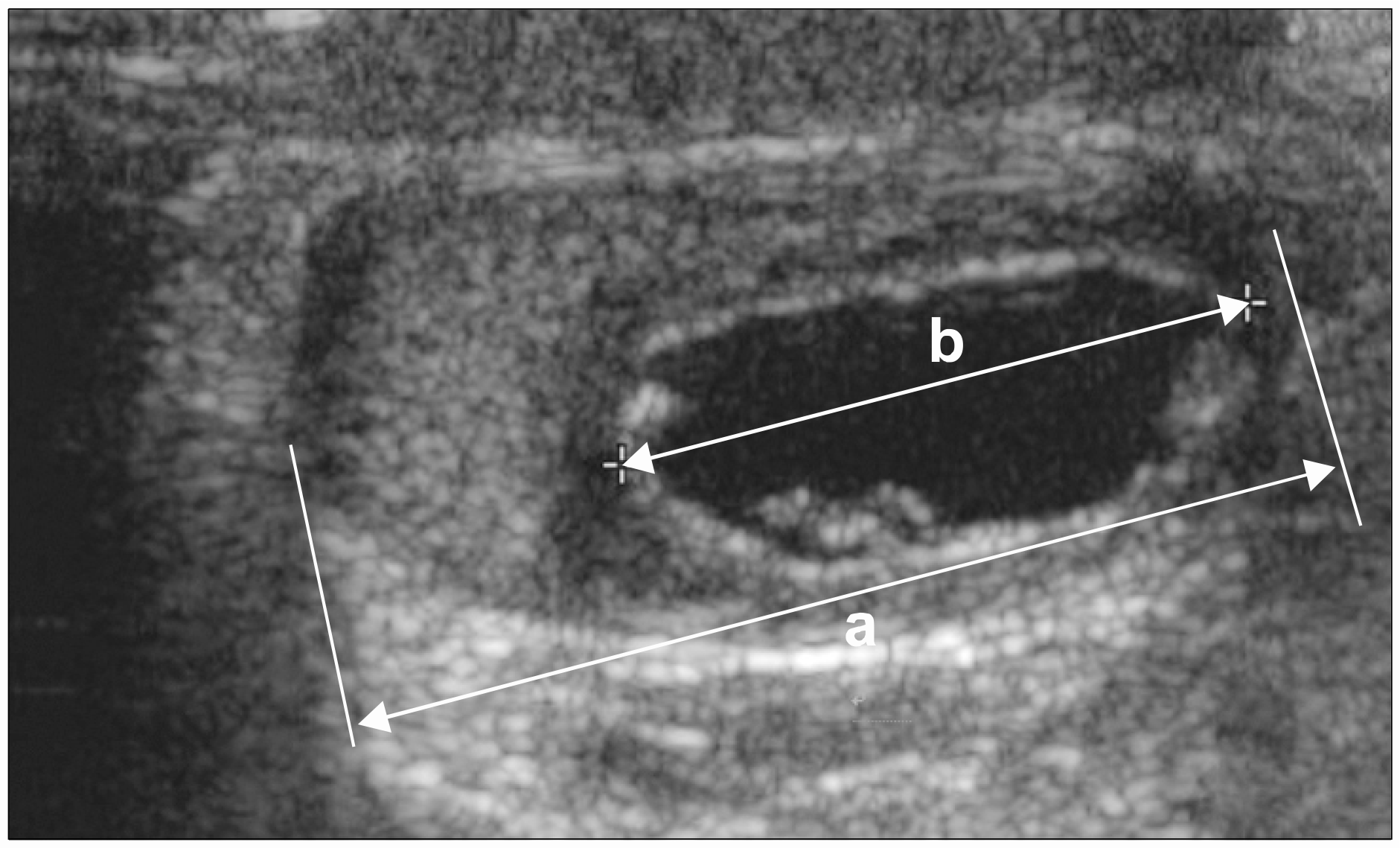Abstract
Materials and Methods
Twenty-five pediatric patients who had a testicular tumor were enrolled for retrospective analysis. Testis-sparing surgery was planned in the cases with clinical features that preoperatively suggested the tumors to be benign, which was later determined intraoperatively by frozen section examination. The preoperative-fetoprotein (AFP) and transscrotal ultrasound (US) were evaluated along with the final pathology. We reviewed the immediate and late surgical complications, as well as the tumor recurrence after surgery.
Results
Teratoma, epidermoid cyst, yolk sac tumor, and Leydig cell tumor accounted for finding in 40%, 32%, 24%, and 4% of the patients, respectively. Based on the preoperative US, 18 patients had benign-looking tumors. According to the age-matched AFP references, 17 patients showed normal ranges preoperatively. Out of 14 patients, whose US and AFP level suggested the tumors to be benign, 10 (71.4%) were eligible for testis-sparing surgery on retrospective review. Testis-sparing surgery was performed in 5 patients, who showed the same pathology in frozen sections (3 epidermoid cysts, 2 teratomas). None of the 5 patients exhibited perioperative complications, and no recurrence or atrophy was observed at a mean follow-up of 39.8 months.
Conclusions
Out of 14 patients, whose US and AFP analyses were available, 10 (71.4%) were eligible for testis-sparing surgery. Testis-sparing surgery was done in five out of the 10 patients without any complication or recurrence. Testis-sparing surgery is a feasible option in children with testicular tumors if the AFP level is within a normal range and the US suggests benign characteristics.
References
1. Kaplan GW, Cromie WC, Kelalis PP, Silber I, Tank ES Jr. Prepubertal yolk sac testicular tumors-report of the testicular tumor registry. J Urol. 1988; 140:1109–12.
3. Shukla AR, Woodard C, Carr MC, Huff DS, Canning DA, Zderic SA, et al. Experience with testis sparing surgery for testicular teratoma. J Urol. 2004; 171:161–3.

4. Metcalfe PD, Farivar-Mohseni H, Farhat W, McLorie G, Khoury A, Bagli DJ. Pediatric testicular tumors: contemporary incidence and efficacy of testicular preserving surgery. J Urol. 2003; 170:2412–5.

5. Walsh C, Rushton HG. Diagnosis and management of teratomas and epidermoid cysts. Urol Clin North Am. 2000; 27:509–18.

7. The Korean Society of Pediatric Urology. Pediatric testicular tumor registry in Korea: 1997–2001. Korean J Urol. 2004; 45:563–72.
8. Marshall S, Lyon RP, Scott MP. A conservative approach to testicular tumors in children: 12 cases and their management. J Urol. 1983; 129:350–1.

9. Rushton HG, Belman AB. Testis-sparing surgery for benign lesions of the prepubertal testis. Urol Clin North Am. 1993; 20:27–37.

10. Wu JT, Book L, Sudar K. Serum alpha fetoprotein (AFP) levels in normal infants. Pediatr Res. 1981; 15:50–2.

11. Talerman A, Haije WG, Baggerman L. Serum alphafetoprotein (AFP) in patients with germ cell tumors of the gonads and extragonadal sites: correlation between endodermal sinus (yolk sac) tumor and raised serum AFP. Cancer. 1980; 46:380–5.

12. Rifkin MD, Kurtz AB, Pasto ME, Goldberg BB. Diagnostic capabilities of high-resolution scrotal ultrasonography: prospective evaluation. J Ultrasound Med. 1985; 4:13–9.

Fig. 1.
Preoperative measurement of testicular tumor on US image; a/bx100=the percentage of the length of intratesticular tumor.

Table 1.
Patient characteristics
| No. of patients (%) | |
|---|---|
| Symptoms and signs | |
| Scrotal enlargement | 14 (56) |
| Palpable mass | 9 (36) |
| Pain | 2 (8) |
| Laterality | |
| Right | 15 (60) |
| Left | 10 (40) |
| Total | 25 (100) |
Table 2.
Final pathology
| No. of patients (%) | |
|---|---|
| Teratoma | 10 (40) |
| Epidermoid cyst | 8 (32) |
| Yolk sac tumor | 6 (24) |
| Leydig cell tumor | 1 (4) |
| Total | 25 (100) |
Table 3.
Preoperative US and final pathology




 PDF
PDF ePub
ePub Citation
Citation Print
Print


 XML Download
XML Download